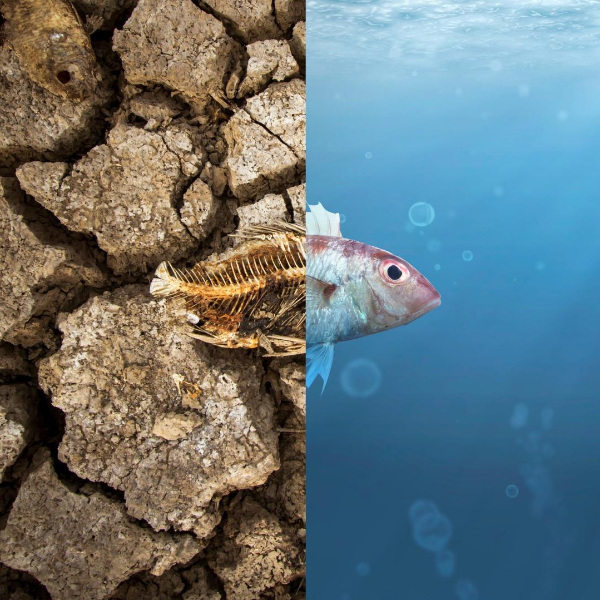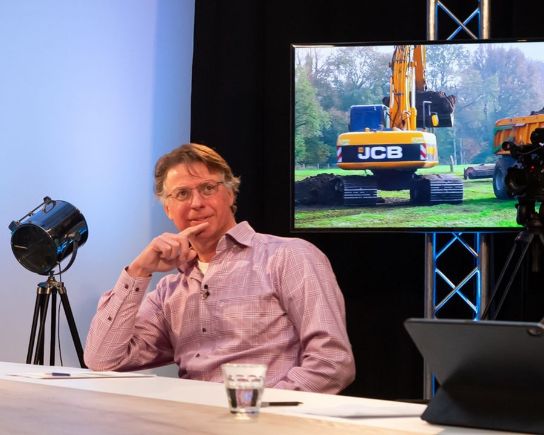Jakob Wallinga’s moonshot idea: natural water level dictates function

Jakob Wallinga’s moonshot idea: natural water level dictates function
In 1962, President John F. Kennedy made an inspiring, bold speech – also known as the Moonshot Speech – that rallied the United States behind a costly but highly successful space programme in which thousands of Americans pooled their knowledge, insights and energy to put the first man on the moon. We could use some of that ‘moonshot thinking’ in water management today. To wrap up and build on the Climate-Robust Water Systems webinar series, we are asking a variety of people from the world of science and water management to share their own moonshot ideas as well as what they are doing to achieve them. This time, we spoke to Jakob Wallinga.
Jakob Wallinga is a professor at Wageningen University, where he is part of the Soil Geography and Landscape group. Between 2005 and 2009 he was a board member at the Delfland water authority. As a scientist, he was closely involved in the Lumbricus knowledge programme, which investigated measures for making high-elevation sandy soils climate-robust. He now leads the CASTOR research project, which also focuses on the future of high-elevation sandy soils. Wallinga has the air of a calm, friendly man – a man with a (water) mission.
What drives you as a water professional?
I’m fascinated by the natural processes of water and soil and the way in which human activity interferes with them. Humanity used to be totally dependent on nature, but over time we gained more and more control over it: we drained marshes and lakes to be able to live and work where they lay. Although we now have complete control over natural processes, we are also confronted with ourselves – nature is turning against us. The climate is changing because of us, and that has consequences. Soils are drying out and becoming depleted, and biodiversity is under severe pressure. I’m looking for a way that we can continue to live and work in perpetual, sustainable balance with nature. That should be possible, but you have to work with nature – not against it, as we so often do today. Think of it like sailing: although the direction of the wind usually determines your course, it is possible to sail against it – it just takes a bit longer.
What is your moonshot idea?
My moonshot idea is that, when it comes to water management, we stop saying 'function dictates water level' and start saying the opposite: 'water level dictates function'. Just to be clear, I’m not talking about the level we invented ourselves once upon a time; I’m talking about the natural water level. This requires a radical change in water management, and it also means we will no longer be able to do anything we want anywhere we want. We have to adapt land use to the natural conditions. On high-elevation sandy soils, for example, this means stopping crop irrigation, which only leads to more groundwater depletion. Instead, we should look for crops that can withstand drought much better, or change the way we use the land. It also means putting an end to draining peat meadows. Such measures only make problems like subsidence and carbon emissions worse.
What can be accomplished in ten years, and what will we need to do to get there?
Within ten years, I want to have developed a concrete idea of what a new, sustainable water-and-soil system could look like. For this to happen, we all need to realise that we can’t continue to work against nature without suffering the consequences. Just think of the intensive use of groundwater without ensuring that it is sufficiently replenished. I try to raise awareness of this whenever and wherever I can.

How can you, as a scientist, contribute to this?
In recent years, we’ve already gained a lot of knowledge and practical experience with various water and soil measures for making sandy soils in the Netherlands more climate-robust – from cultivating alternative crops to measures to improve the sponginess of the soil. The Lumbricus programme I was involved in, for example, is a good example of this. Our new research project, CASTOR (CAtchment Strategies TOwards Resilience), follows on from this. We received funding from the Dutch Research Agenda to work with stakeholders to draw up a concrete blueprint for a new water-and-soil system on high-elevation sandy soils – a blueprint that offers perspective to all stakeholders, and a water-and-soil system in which biodiversity, an attractive landscape, and responsible land use (agricultural and otherwise) go hand in hand. We know how the system used to work naturally, and we know how it works now. Now we have to find a way of making it work sustainably, without overwhelming natural processes.
And as an individual?
The concerns I have as a scientist affect the choices I make as an individual. I avoid travelling by plane unless it’s absolutely necessary, and I’ve gradually stopped eating meat altogether – except when bitterballen are being served...
